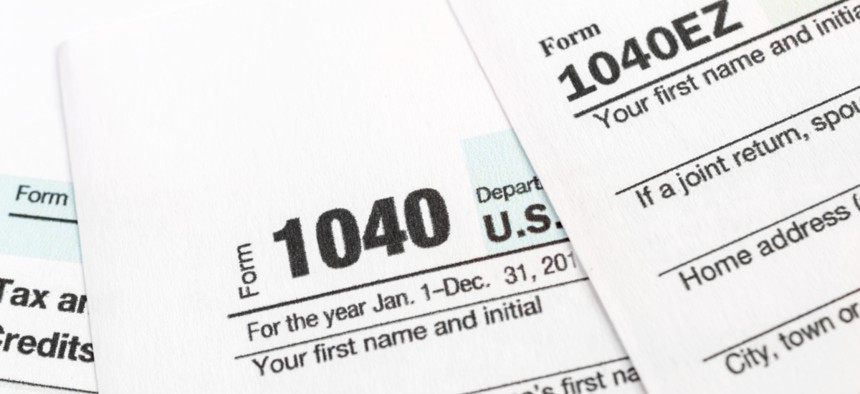
Shutterstock.com
Taxpayers Are Very Confused
Fewer returns are in, traffic to the IRS website is up, and everyone’s complaining about refunds. Why?
As Americans prepare to file their tax returns under the new tax law, which Republicans passed at the end of 2017, the evidence suggests they are very, very confused.
Usually, about 85 percent of households file their returns from late January to mid-April. Some taxpayers request an extension until October 15, generally those with complex business interests who may not have the required information available in time to meet the April 15 deadline. One sign of confusion is that about 2 percent fewer returns have been filed so far this year compared with this time last year. Perhaps these laggards are waiting to see whether the IRS releases more guidance on the complicated features of the new law.
Another sign of confusion is increased traffic to the IRS website: Visits are up 11 percent over last year’s levels. Some portion of that 11 percent might be a result of taxpayers using the internet for their questions instead of calling the IRS (because of recent budget cuts, the wait can be long)—but surely not the full amount.
Taxpayers also seem confused about their refunds. Although the most recent IRS data show that average income-tax refunds are closely tracking the average refund from last year, taxpayers have been complaining in interviews with journalists and on social media that their refund is smaller than expected or that they unexpectedly owe additional tax.
Given that the Tax Cuts and Jobs Act was all about tax cuts, how can this be? Two reasons.
First, although the TCJA cut individual income taxes for a large majority of income-tax filers, it will increase them for about 6 percent of households (according to Tax Policy Center projections). Candidates for tax increases include those with dependent children age 17 or older (because the personal exemption for these dependents was changed to a potentially less valuable tax credit), employees with significant business expenses (because these are no longer deductible), and taxpayers with large state and local tax bills (because the deduction for these is now limited to $10,000 a year). The 6 percent of households confronting a tax increase translates into 10 million tax filers who may be surprised, unhappy, or both.
Second, some people seem to think that because their refund is smaller than expected, their total liability is higher—even though it isn’t. When the IRS released new withholding tables only a few weeks after passage of the TCJA, it urged taxpayers to check their withholding with a new calculator—available online—and, if warranted, contact their employers to increase or decrease the amount of tax withheld from their paychecks. Of course, most Americans did no such thing. As a result, certain groups of taxpayers, including two-earner couples, those who had adjusted withholding allowances in the past to reflect their specific tax situation, and taxpayers who had large state and local income-tax liabilities, might find that their withholding was way off. The Government Accountability Office, Congress’s watchdog, recently estimated that about 3 percent of households will wind up owing tax, rather than receiving a refund, because of the new withholding tables. That’s another nearly 5 million tax filers who might be surprised, unhappy, or both.
Taxpayer surprises are likely to keep cropping up throughout the filing season and probably beyond. Some taxpayers will discover that they unnecessarily kept receipts for charitable contributions because the TCJA’s larger standard deduction eliminates the need to itemize deductions. (The Tax Policy Center estimates that the fraction of taxpayers claiming itemized deductions will drop by more than half this year.) More happily, some self-employed people will find that they are eligible for a new deduction that lowers their tax rate. They might wonder whether they can or should shift more income into the self-employed bucket.
When Republicans in Congress began drafting the TCJA, they promised tax cuts, and they promised a simpler process—some even suggested Americans would be able to file their returns on a postcard. One out of two ain’t bad.






